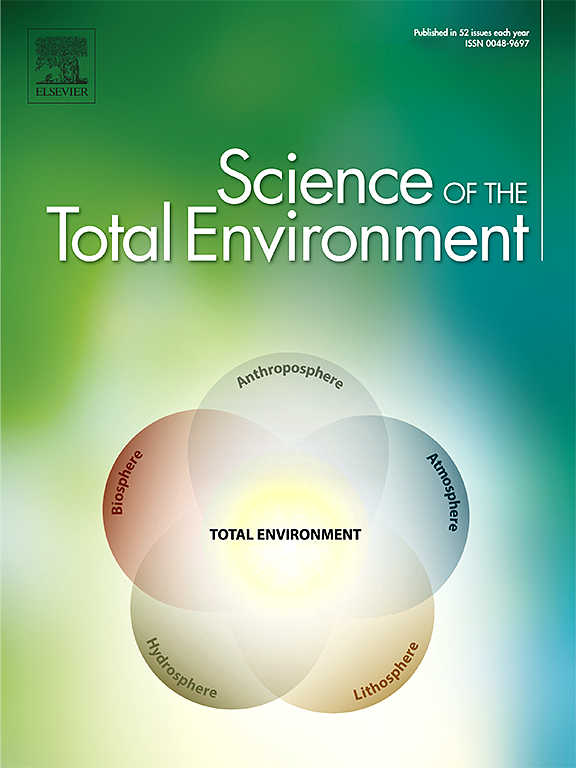Impact of high-density polyethylene (HDPE) microparticles on soil physical-chemical properties, CO2 emissions, and microbial community in a two-year field trial
IF 8.2
1区 环境科学与生态学
Q1 ENVIRONMENTAL SCIENCES
引用次数: 0
Abstract
Contamination by microplastics (MPs) is a serious problem affecting both aquatic and terrestrial ecosystems, but despite the large number of papers published in recent years, the impact of microplastics (MPs) on soil is still debated. This work aims to evaluate the effects of different amounts (0, 1, 2 % v/v) of high-density polyethylene (HDPE) microparticles (1–0.25 mm in size) on soil properties over time. Specifically, in a field plot experiment lasting about 2 years, treated and control soils were periodically sampled and analysed for their physical (aggregate stability and distribution), chemical (total N, soluble C and N, available P), and soil biochemical (basal respiration, microbial biomass C, enzyme activities, and fatty acid methyl ester - EL-FAME) properties. In addition, CO2 fluxes from soil to atmosphere were measured throughout the experiment. The physical and chemical parameters of the treated soils did not differ significantly from the control soil, whereas specific changes occurred in the biochemical characteristics during the experiment, particularly in the soil treated with the higher dose of MPs. In the early period (21 to 46 days after the treatment), some changes in the microbial community structure were observed for the soil treated with 2 % MPs, suggesting the occurrence of stress conditions for the microbial biomass, likely due to nutrient limitation. After 166 g from the start of the experiment, the 2 % MPs-treated soil showed, other than a lower CO2 flux than the control soil, a reduction of basal respiration together with an increase in actinomycetes and total fungi (both saprophytes and AMF). There was also an increase in C-related enzyme activities one year after treatment with MPs. These latter results suggest that the soil microbial community may be adapting to the new conditions and available energy substrates, which may also indicate the onset of HDPE degradation processes.

求助全文
约1分钟内获得全文
求助全文
来源期刊

Science of the Total Environment
环境科学-环境科学
CiteScore
17.60
自引率
10.20%
发文量
8726
审稿时长
2.4 months
期刊介绍:
The Science of the Total Environment is an international journal dedicated to scientific research on the environment and its interaction with humanity. It covers a wide range of disciplines and seeks to publish innovative, hypothesis-driven, and impactful research that explores the entire environment, including the atmosphere, lithosphere, hydrosphere, biosphere, and anthroposphere.
The journal's updated Aims & Scope emphasizes the importance of interdisciplinary environmental research with broad impact. Priority is given to studies that advance fundamental understanding and explore the interconnectedness of multiple environmental spheres. Field studies are preferred, while laboratory experiments must demonstrate significant methodological advancements or mechanistic insights with direct relevance to the environment.
 求助内容:
求助内容: 应助结果提醒方式:
应助结果提醒方式:


